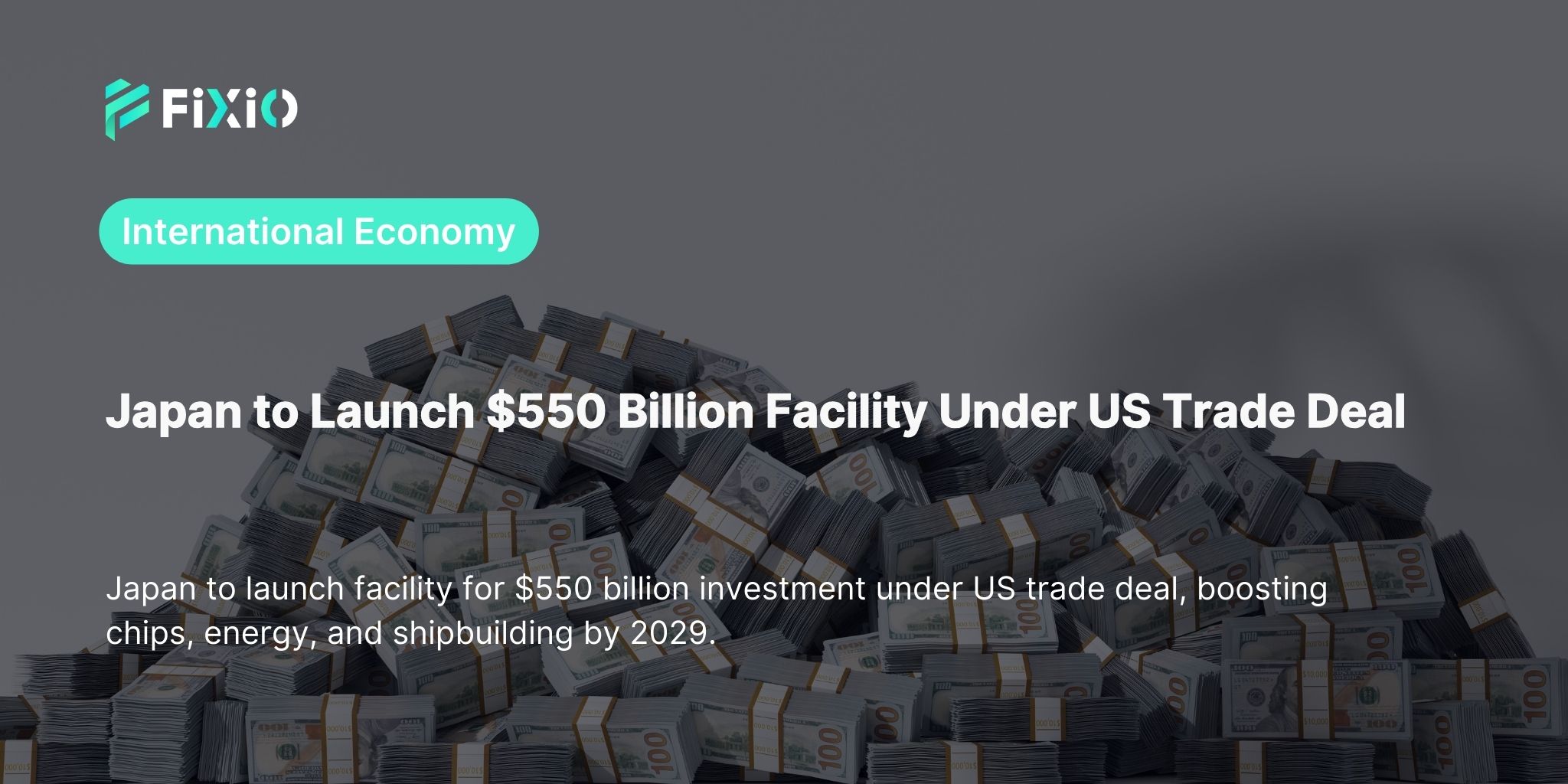
Japan to launch facility to support $550 billion investment under US trade deal is one of the most significant economic announcements in recent years. The initiative, driven by Tokyo’s finance ministry, highlights Japan’s determination to deepen economic ties with the United States while boosting strategic sectors such as semiconductors, metals, pharmaceuticals, energy, and shipbuilding. This package, scheduled to be rolled out by January 2029, aligns with the final year of Donald Trump’s presidential term and represents a powerful bilateral investment strategy.
The decision to establish the facility within the Japan Bank for International Cooperation (JBIC) reflects the government’s intent to create a dedicated channel for this massive package. Japan to launch facility to support $550 billion investment under US trade deal demonstrates a shift from conventional tariff-focused agreements toward deeper industrial and technological cooperation. By supporting projects in vital sectors, both nations aim to reduce vulnerabilities in supply chains and strengthen economic security.
Semiconductors are central to the plan. Japan to launch facility to support $550 billion investment under US trade deal includes a strong focus on chips, which have become indispensable to modern economies. Japan’s expertise in semiconductor materials, coupled with US technological leadership, makes this sector a natural priority.
Metals, particularly rare earth elements, are also a focal point. These resources are vital for high-tech products and renewable energy infrastructure. Investments will likely support exploration, recycling, and sustainable mining initiatives, ensuring long-term access to critical minerals.
The pandemic highlighted global vulnerabilities in health supply chains. By investing in pharmaceuticals, the package seeks to strengthen domestic manufacturing, enhance research, and reduce dependence on foreign suppliers. This supports a more resilient healthcare system.
Energy security is another priority. The plan covers renewable sources such as offshore wind and solar, as well as liquefied natural gas (LNG). These projects aim to balance Japan’s reliance on imports with sustainability goals, while maintaining competitiveness in global energy markets tied to Brent crude pricing.
Japan’s shipbuilding industry will also benefit. Investments will likely focus on cleaner, more efficient vessels, helping Japan compete globally while aligning with decarbonization policies. This sector connects directly with global trade expansion.
The Japan to launch facility to support $550 billion investment under US trade deal initiative must be seen within broader geopolitics. Both countries are strengthening industrial partnerships to counter global competition, particularly in technology and supply chains. The memorandum signed this month highlights a shared vision for resilient economic cooperation. By 2029, the impact will be felt in new factories, jobs, and technological advancements that shape the balance of global industry.
The $550 billion package promises to stimulate Japan’s economy, boosting growth and creating opportunities across industries. For the US, it ensures a reliable partner in Asia. Markets such as the Nikkei 225 are expected to reflect the optimism generated by these coordinated efforts. Beyond financial performance, the initiative strengthens global supply chain resilience and reduces risks of overdependence on any single country.
Executing such an ambitious plan will face challenges. Bureaucratic delays, regulatory hurdles, and global uncertainties may slow progress. Private sector participation will be essential, as government-backed projects alone cannot sustain the momentum. Environmental regulations and shifting market dynamics must also be addressed to ensure long-term success.
The announcement that Japan to launch facility to support $550 billion investment under US trade deal marks a turning point in bilateral cooperation. By focusing on semiconductors, metals, pharmaceuticals, energy, and shipbuilding, the initiative ensures long-term strategic benefits for both economies. This facility at JBIC is set to become a symbol of resilience, innovation, and forward-looking trade policy. As 2029 approaches, the world will watch closely to see how this unprecedented collaboration reshapes industries and markets worldwide. Stay informed with the latest Forex trading news and analysis. Visit our website now at: https://fixiomarkets.com/en/prex-blogs
Japan to launch facility for $550 billion investment under US trade deal, boosting chips, energy, and shipbuilding by 2029.
Superior trade execution & trading conditions with the NDD method.

The online FX industry provides a platform for investors worldwide to engage in the buying and selling.

Subscribe to our daily newsletter and get the best forex trading information and markets status updates
Trade within minutes!
Comment (0)